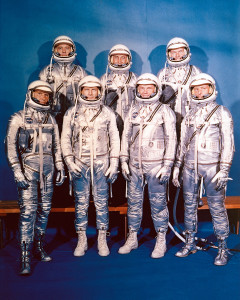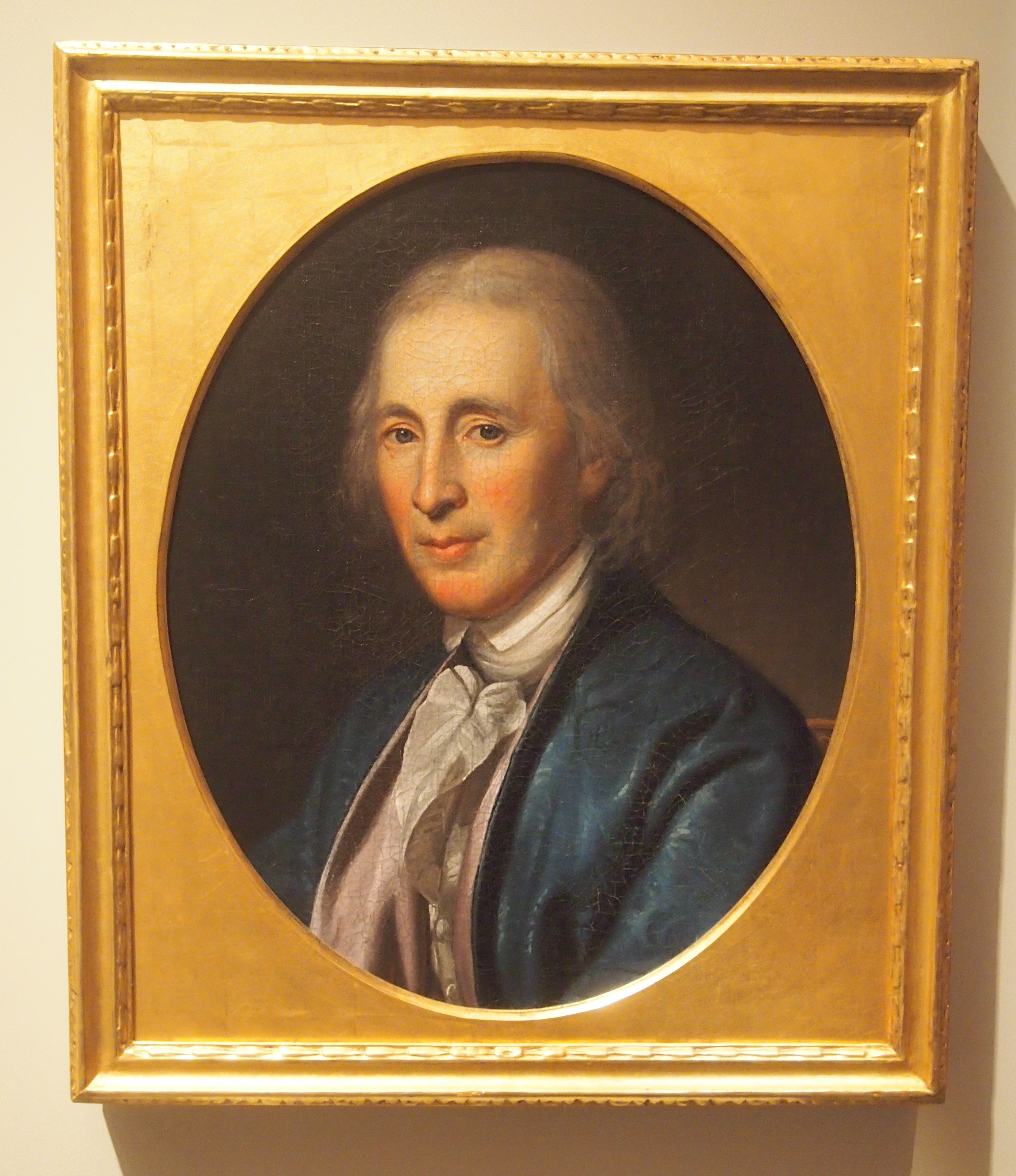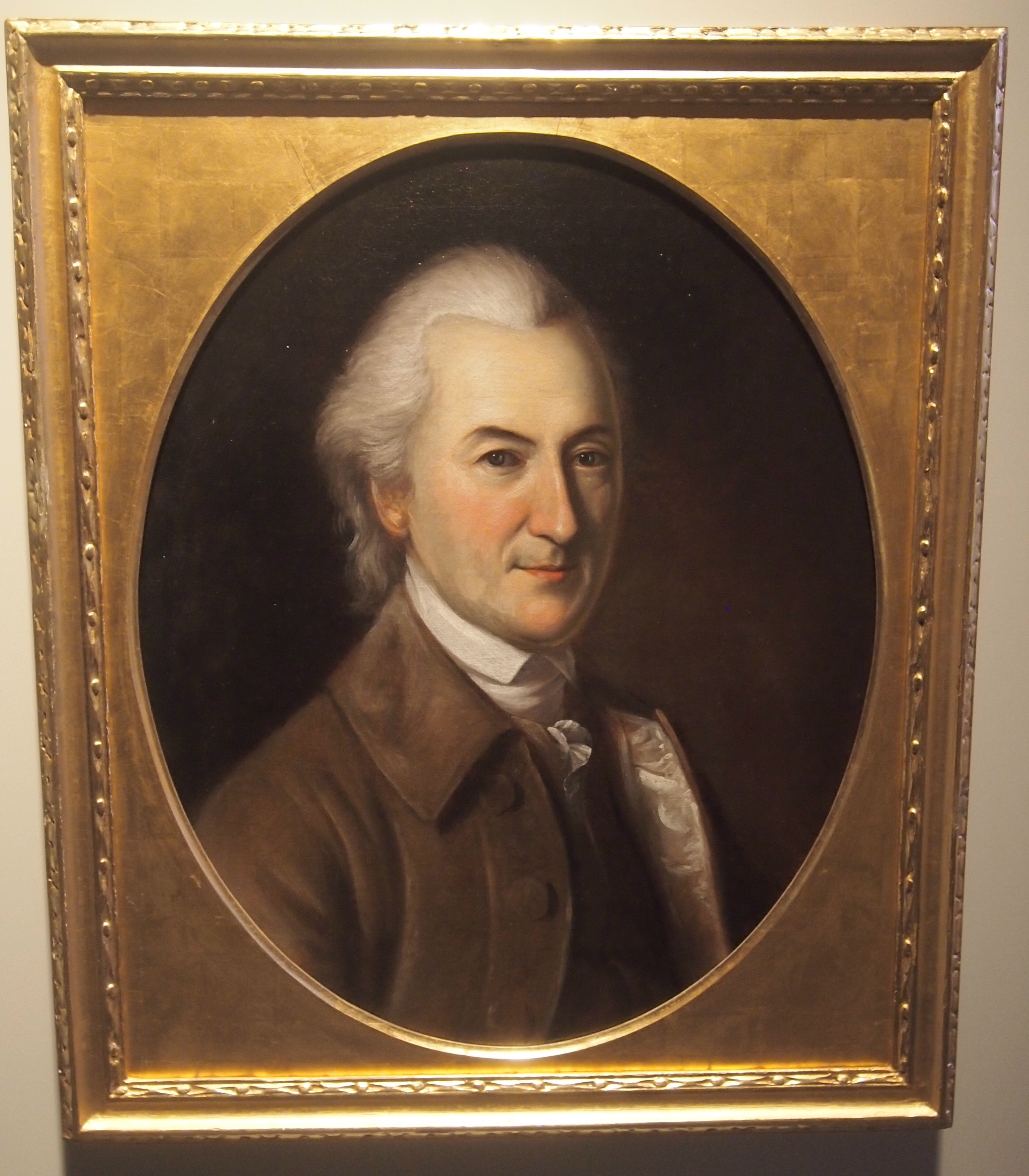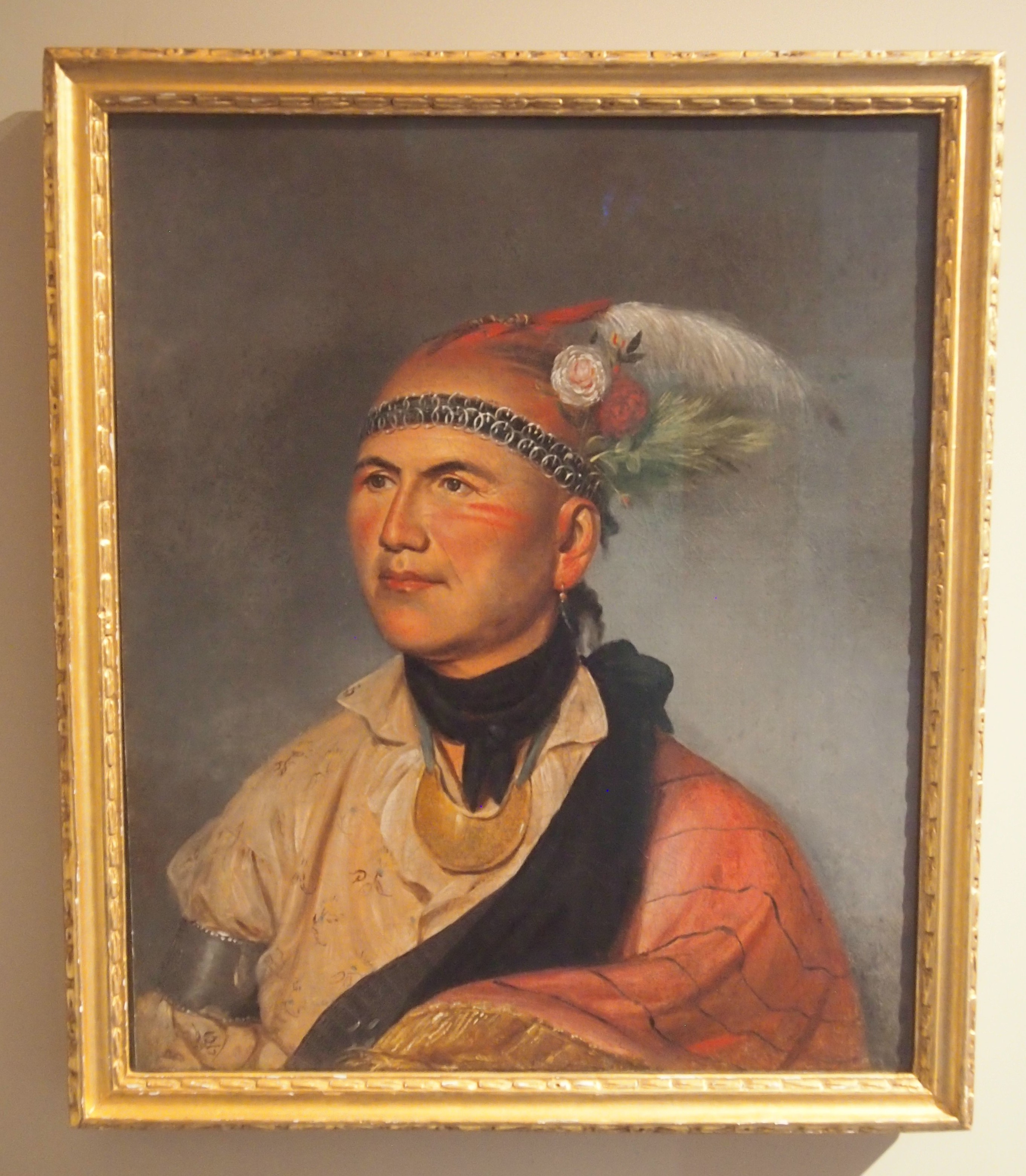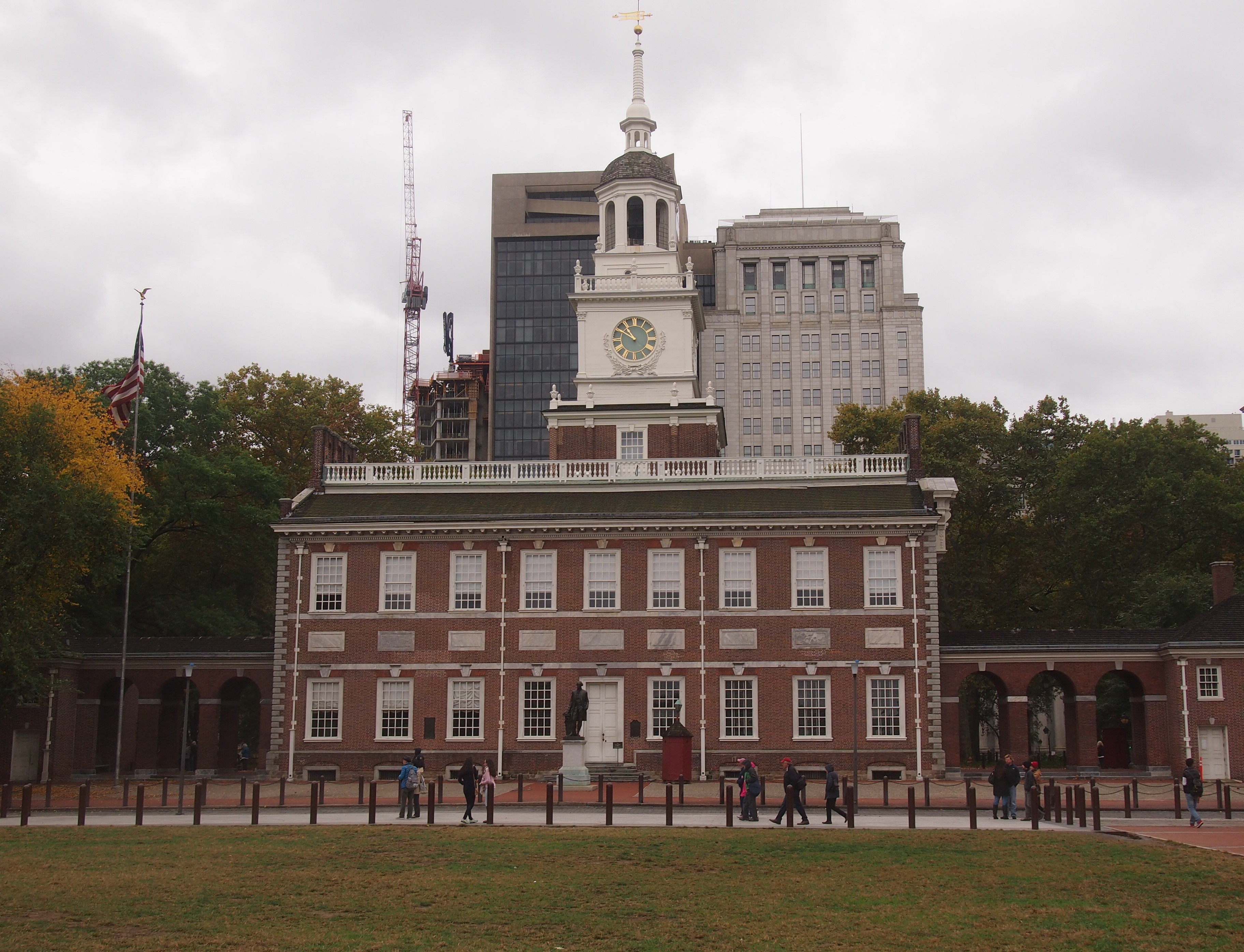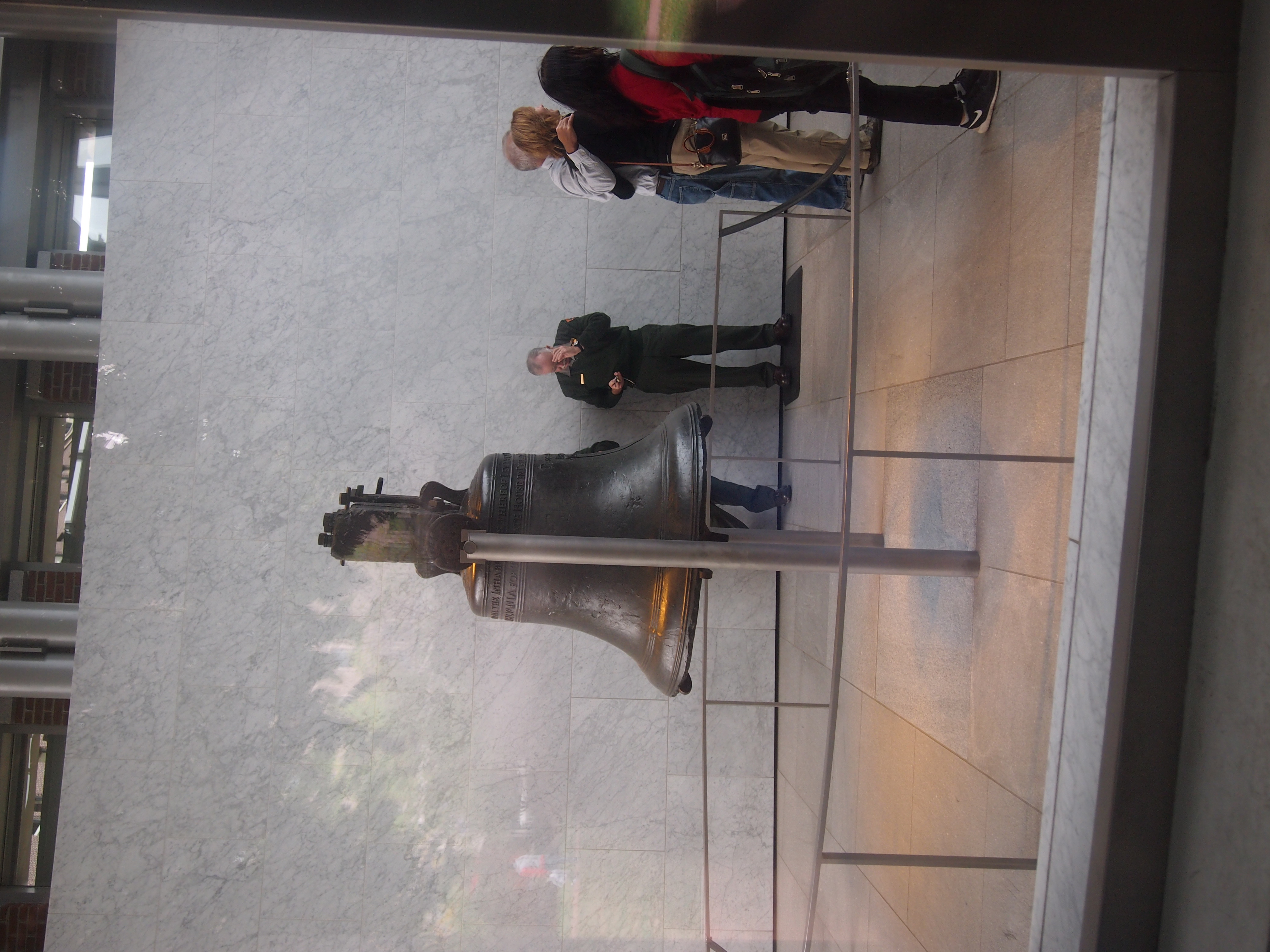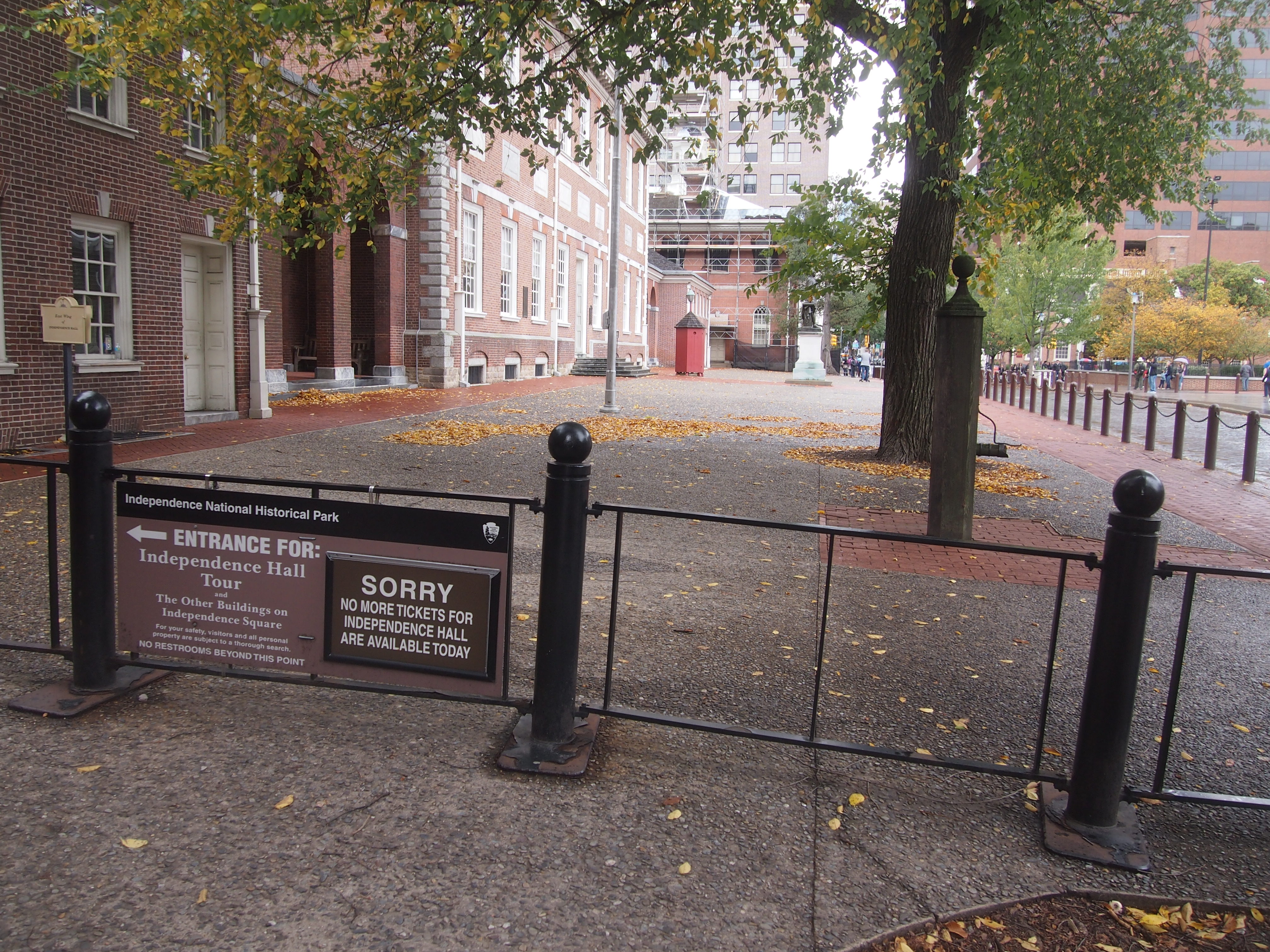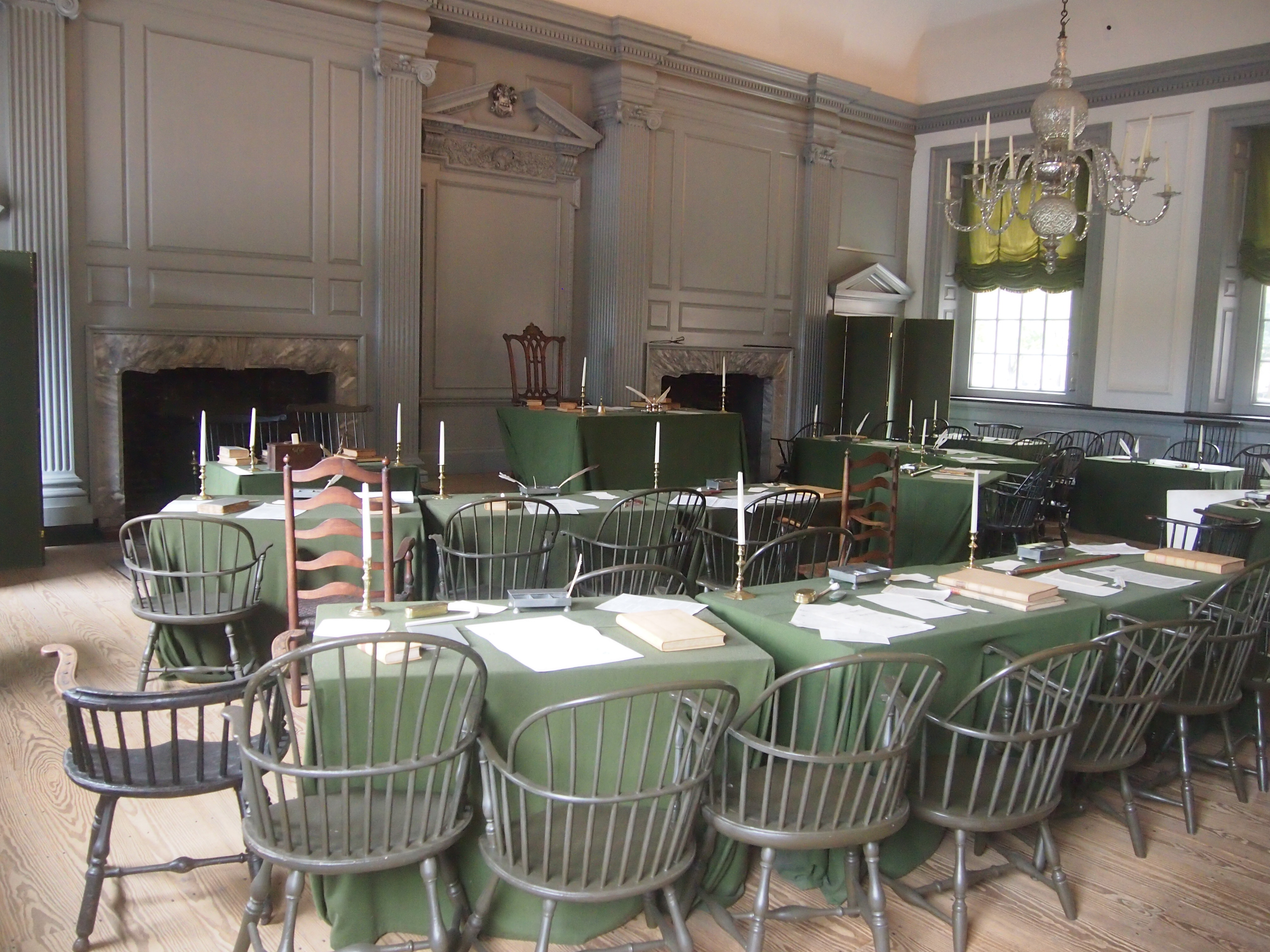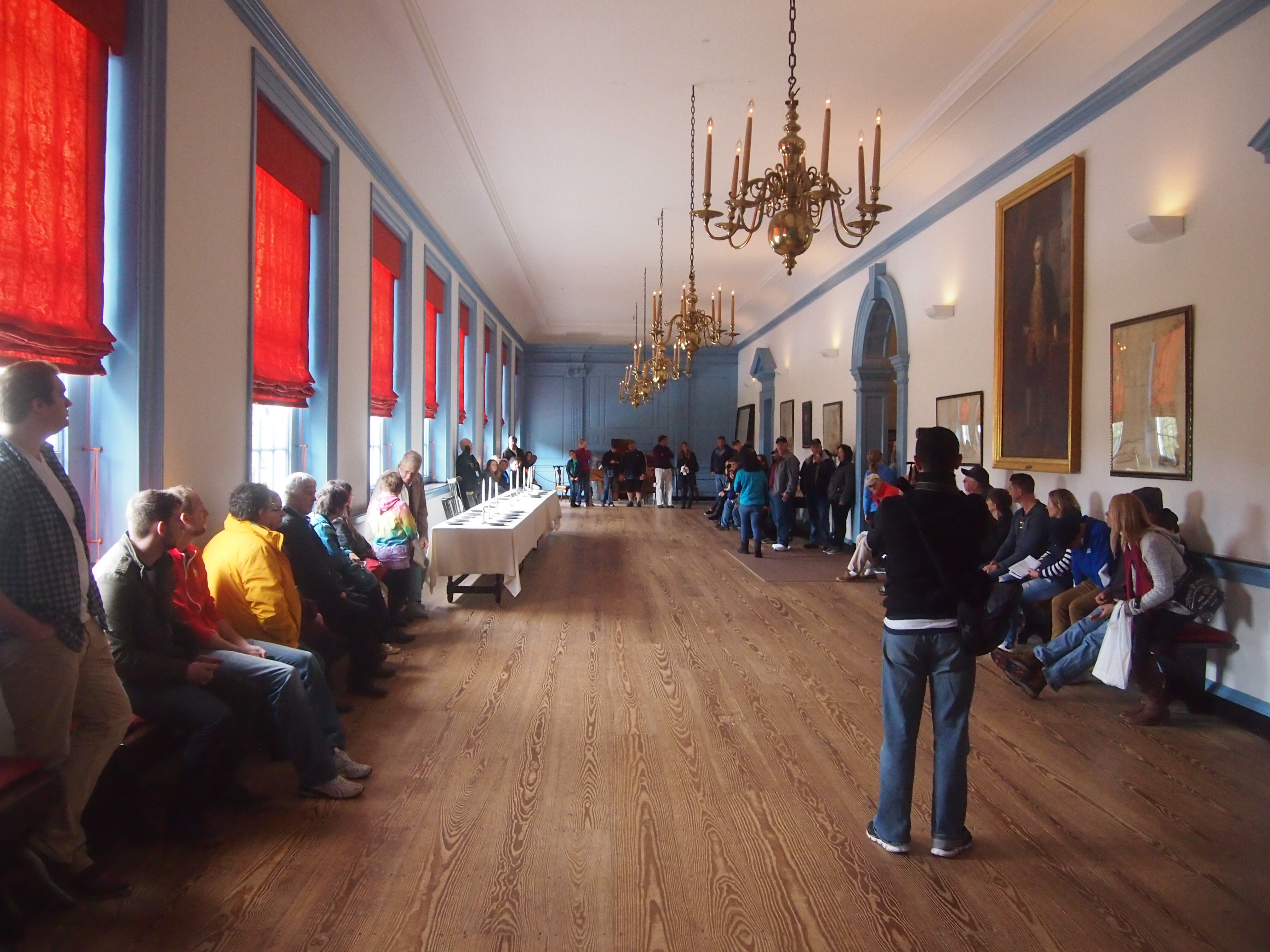One of the things to do while you wait to enter Independence Hall is take a look at the museum of the American Philosophical Society, which stands very near the hall itself.
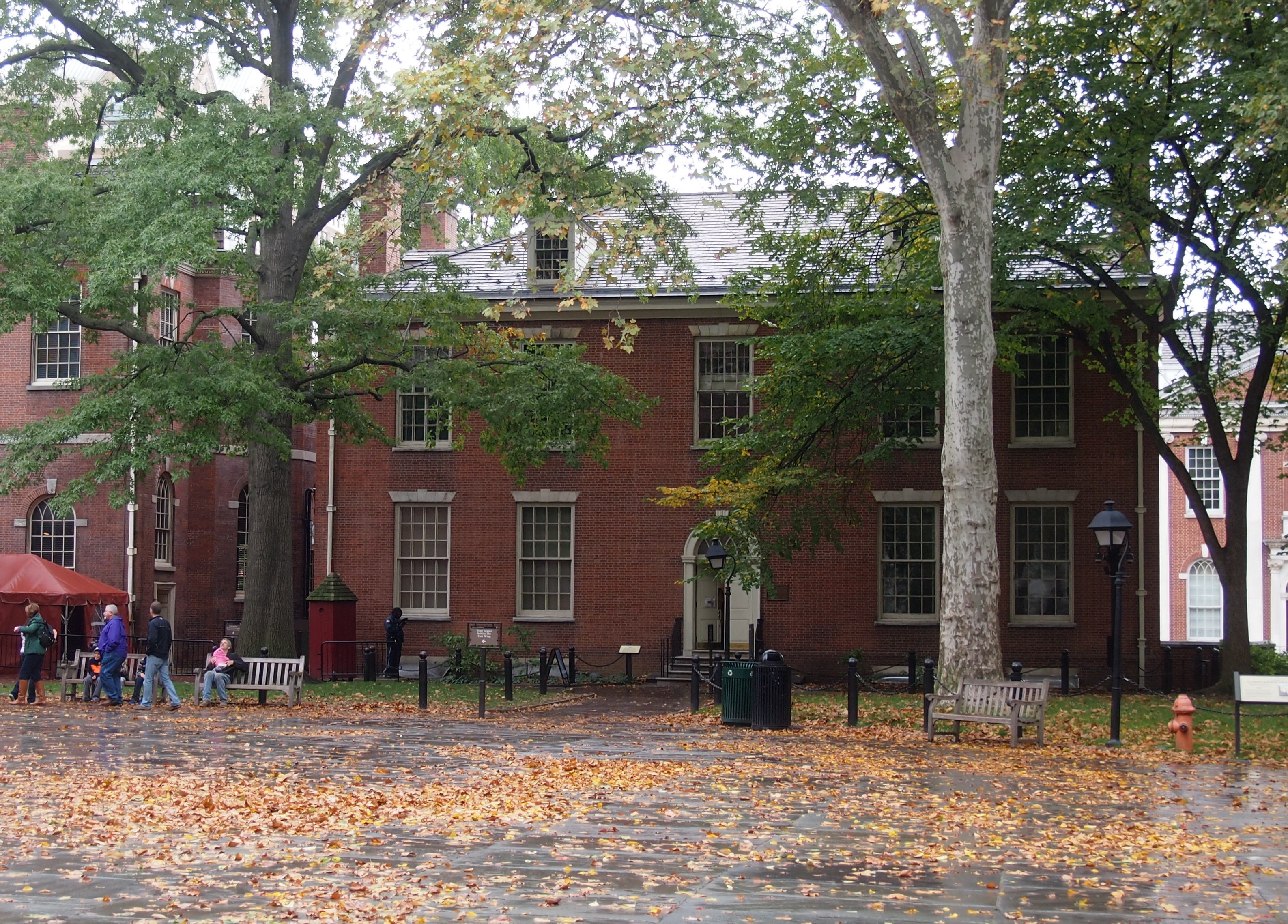 I wasn’t aware that the APS is still an ongoing thing, but that’s just me being ignorant again. It’s a learned society, originally inspired by the old concept of leisure. “The first drudgery of settling new colonies is now pretty well over,” wrote Benjamin Franklin in 1743, “and there are many in every province in circumstances that set them at ease, and afford leisure to cultivate the finer arts, and improve the common stock of knowledge.”
I wasn’t aware that the APS is still an ongoing thing, but that’s just me being ignorant again. It’s a learned society, originally inspired by the old concept of leisure. “The first drudgery of settling new colonies is now pretty well over,” wrote Benjamin Franklin in 1743, “and there are many in every province in circumstances that set them at ease, and afford leisure to cultivate the finer arts, and improve the common stock of knowledge.”
The main current exhibit at the APS museum is Gathering Voices, which “tells the story of Jefferson’s effort to collect Native American languages and its legacy at the Society,” says the museum. “Jefferson had an abiding interest in Native American culture and language, while, at the same time, supporting national policies that ultimately threatened the survival of Indigenous peoples. As president of the APS from 1797 to 1814, Jefferson charged the Society with collecting vocabularies and artifacts from Native American nations. Over the next two hundred years, the APS would become a major repository for linguistic, ethnographic, and anthropological research on Native American cultures.”
It was an interesting display, including some documents in Jefferson’s hand. The collection isn’t as large as it might have been, however. The museum also tells this little-known story: “When Thomas Jefferson left Washington after two terms as President of the United States, he packed 50 Native American vocabulary lists in a trunk and sent them on a river barge back to Monticello along with the rest of his possessions. Somewhere along the journey, a thief stole the heavy trunk, thinking it was full of treasure. Upon discovering it was only filled with papers, he tossed the seemingly worthless contents into the James River. The loss of the vocabularies represented the destruction of 30 years of collecting on Jefferson’s part.”
Photocopying. That’s what Jefferson needed, but didn’t have.
In the West Wing of Independence Hall, there’s a small exhibit that doesn’t require waiting or a ticket to enter — another thing you can do while waiting to get into the rest of the hall. The exhibit is called Great Essentials.
On display are original printed copies of the Declaration of Independence, the Articles of Confederation, and the Constitution. All very interesting, but the thing that really got my attention was the Syng inkstand. A fine work of silversmithing, and highly placed in the history of the United States. It may be the only inkstand anywhere that has a proper name, though I wouldn’t swear to it.
“Irish-born Philip Syng was the son of Philip Syng, a silversmith,” notes the Penn University Archives and Records Center. “In 1714 he and his father emigrated to America. In 1726, after a successful apprenticeship in Philadelphia and a trip to England, Philip established himself as a silversmith in Philadelphia. In 1730 he married Elizabeth Warner; together they had at least eighteen children.
“Perhaps on his trip to England, and if not, soon thereafter, Syng met Benjamin Franklin. The two formed a friendship, leading to Syng’s inclusion in the Junto, Franklin’s group of political and intellectual civic leaders… Syng was also elected to various public offices including city assessor, warden of the port, and treasurer of the city and county of Philadelphia.
“Syng was renowned as a silversmith, creating the finest work for Philadelphia’s leading families. His most famous work was the inkstand he made for the Pennsylvania Assembly, which was then used by the signers of the Declaration of Independence and the U.S. Constitution. He provided seals for the Library Company, the Union Fire Company, the Philadelphia Contributionship and for various surveyors and Pennsylvania counties. His shop produced not only silver bowls, tankards, teapots and trays but also gold belt buckles, buttons and teaspoons.”
A block north of Independence Hall is a visitors center of fairly recent vintage, at least compared with the original buildings, and across Market St. from the center — between it and the Liberty Bell — is the President’s House Site.
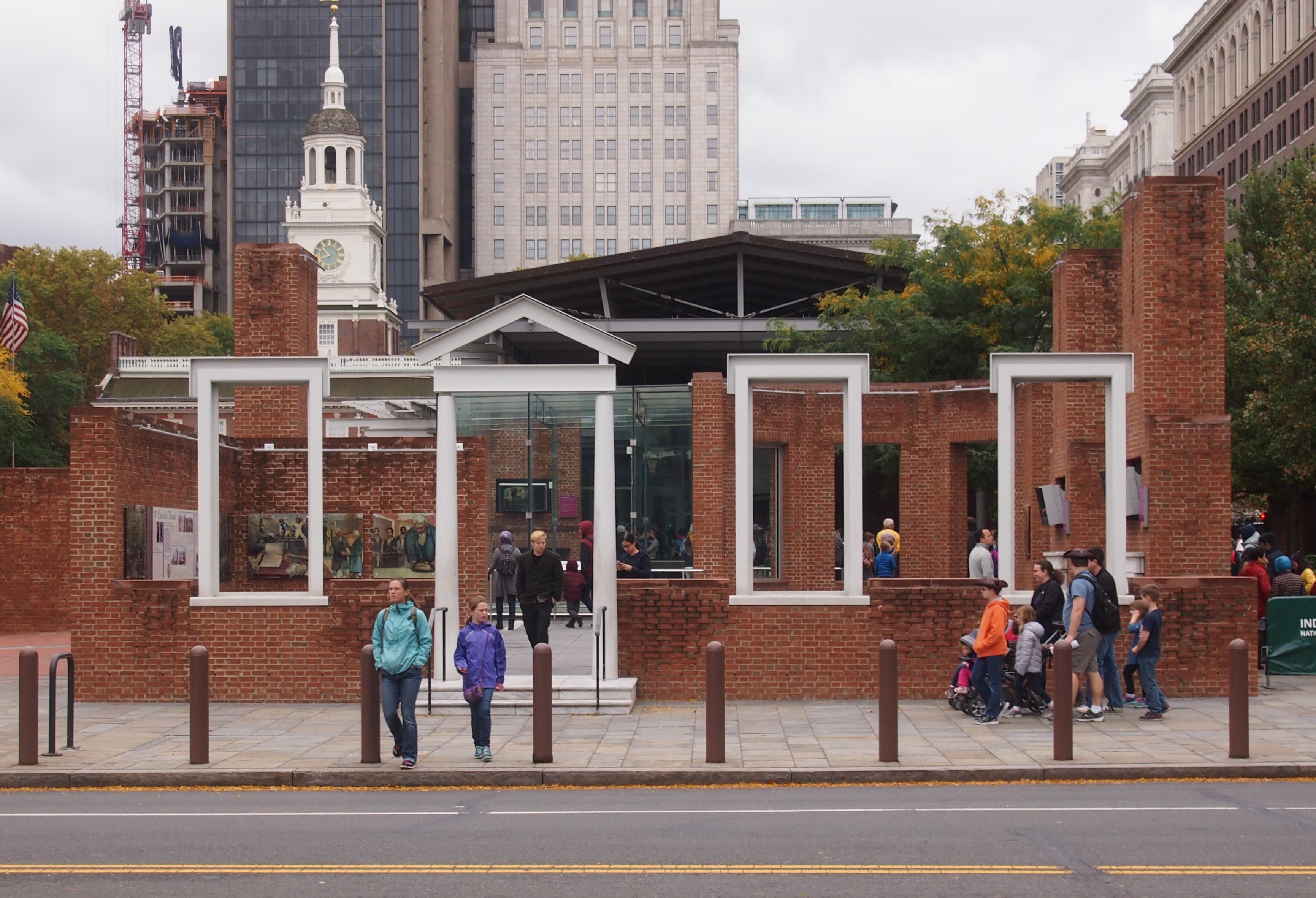
I quote the NPS on the history of the site at some length, because it’s a relatively unknown place, but much happened there. It was originally built in 1767, and was known as the Masters-Penn house (a grandson of William Penn lived there in its early days).
“In September 1777, British forces under General Sir William Howe occupy Philadelphia after the Battles of Brandywine and Germantown. General Howe makes the Masters-Penn house his winter residence and headquarters while Washington and his troops retreat to Valley Forge. In June 1778, the British evacuate Philadelphia and consolidate their forces in New York.
“Colonial forces enter Philadelphia under the command of Major-General Benedict Arnold. Arnold promptly makes the Masters-Penn House his residence and headquarters. In March 1779, Arnold resigns his post and two months later, while still living in the house, he begins his treasonous correspondence with the British.
“In January 1780, the house is severely damaged by fire, and is subsequently purchased and rebuilt by Robert Morris, the famed ‘Financier of the Revolution.’ Morris rebuilds the house to its original plan, enlarges the property, and adds an icehouse and several back buildings.
“In 1790, Robert Morris volunteers his house to serve as President Washington’s residence while Philadelphia temporarily serves as the nation’s capital. Washington occupies the property from November 1790 to March 1797, during which time his household includes nine enslaved Africans brought up from Mount Vernon. He also makes several enlargements and modifications to the house and back buildings, including the addition of a slave quarters between the kitchen and stables.
John Adams succeeds Washington as President and moves into the President’s House in March 1797. Adams leaves Philadelphia in 1800 and moves into the newly completed White House in Washington D.C. on November 1.”
So it’s a house associated with the Penn family, Gen. Howe, Benedict Arnold, Robert Morris, George Washington and John Adams. What happened to it later?
“In 1832, the building is demolished and rebuilt as a series of three narrow stores. Only the east and west walls of the original house are left standing, and are incorporated into the later commercial buildings… In 1935, the later commercial properties are themselves demolished, although remnants of the original east and west walls of the President’s House survive until the early 1950s. In 1951, the entire block is razed.”
What’s standing there now is a monument, completed in 2010 after much agitation, to the slaves who came with George Washington to attend his household while he lived there. (And whom he rotated back and forth to Virginia to avoid having to free them under Pennsylvania law.)
“Dominating the site as a whole is a large glass enclosure — the architects, Kelly/Maiello Architects & Planners, call it a ‘glass vitrine’ — protecting the fruits of a 2007 archaeological excavation. Within, about 10 feet below street level, visitors can see the remains of house foundations, revealing both the world of Washington and Adams (who held no slaves), and the world of indentured servants and Washington’s black chattel.”
For the record, Moll, Christopher Sheels, Hercules, his son Richmond, Oney Judge, her brother Austin, Giles, Paris, and Joe were the slaves who worked for President Washington at the Philadelphia household.
Of Hercules, the president’s chef, Wiki notes that “Stephen Decatur Jr.’s book Private Affairs of George Washington (1933) stated that Hercules escaped to freedom from Philadelphia in March 1797, at the end of Washington’s presidency… In November 2009, Mary V. Thompson, research specialist at Mount Vernon, discovered that Hercules’s escape to freedom was from Mount Vernon, and that it occurred on February 22, 1797 – Washington’s 65th birthday…
“At Martha Washington’s request, the three executors of Washington’s Estate freed her late husband’s slaves on January 1, 1801. It is possible that Hercules did not know he had been manumitted, and legally was no longer a fugitive.
“In a December 15, 1801 letter, Martha Washington indicated that she had learned that Hercules, by then legally free, was living in New York City. Nothing more is known of his whereabouts or life in freedom.”
